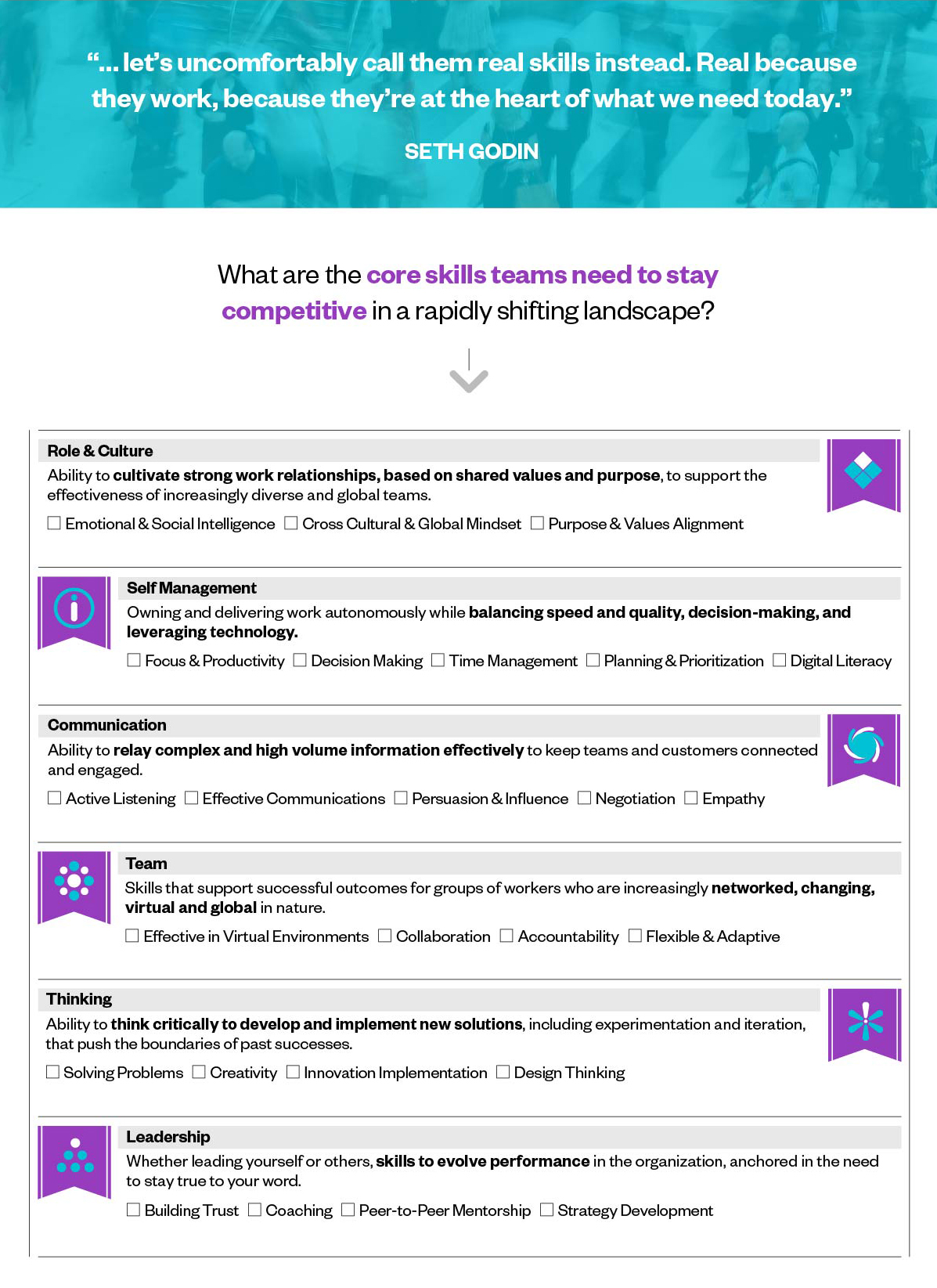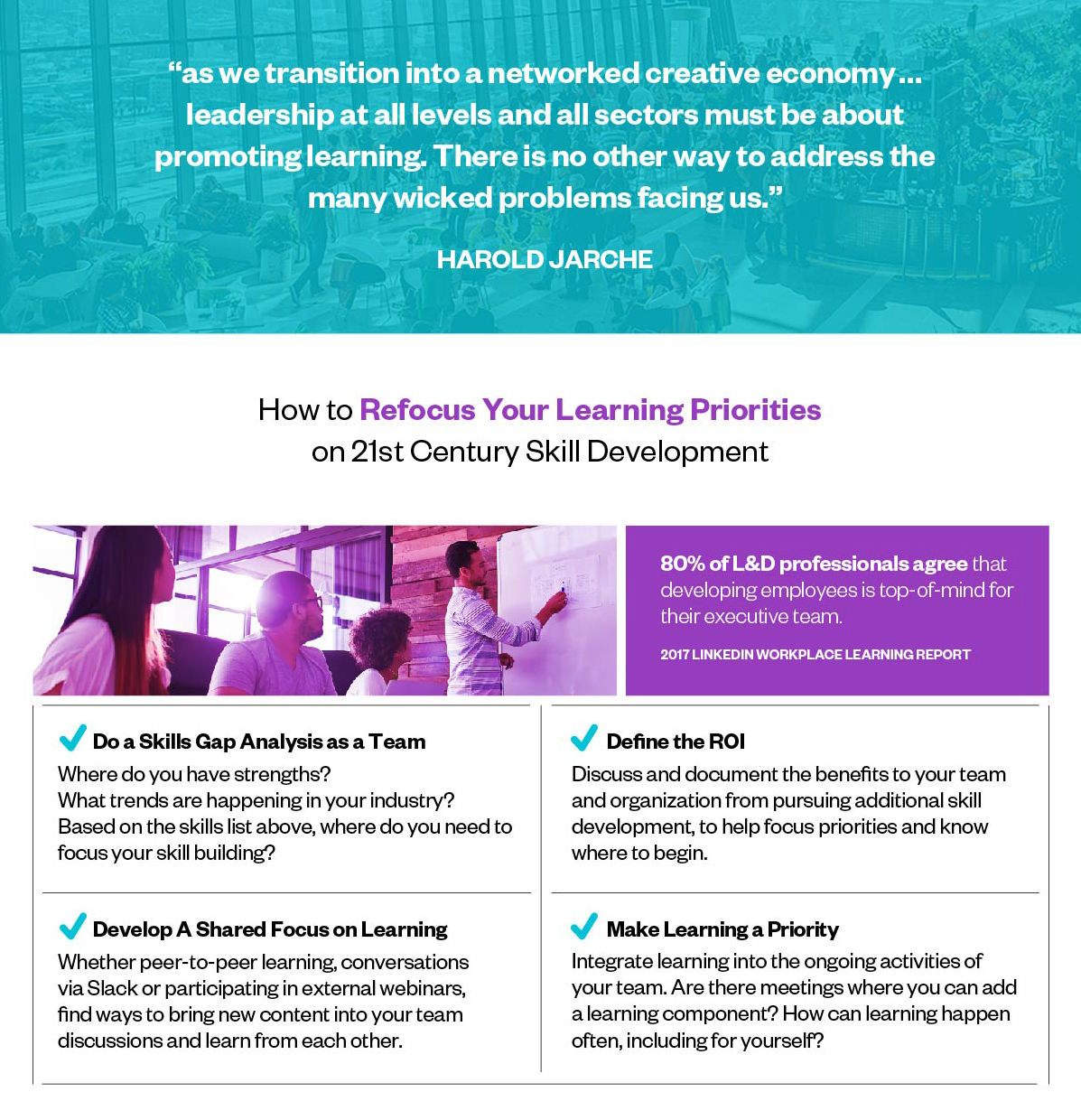Whether you agree with experts who feel the “future of work” is still ahead, or is in fact already here, most organizations today are already experiencing significant levels of change. Technology is evolving, processes are becoming automated, and traditional, hierarchical organizational structures are being tested and re-evaluated in pursuit of more effective models. To navigate effectively in this landscape, employees and teams must develop new skills that allow them to adapt and work effectively through these changes, or risk getting left behind.
The data from Deloitte, Gallup, the World Economic Forum (and many others) shows that the landscape is becoming more complex and uncertain, with an increased focus on collaboration in teams. As a result of this shift, it’s time to reevaluate our perception of “soft skills”—communication, empathy, collaboration, creativity, emotional intelligence, and other skills traditionally viewed as secondary to technical ones—and consider them as core capabilities that are essential to competitive teams.
Click on any of the images to view the full infographic.
As Deloitte notes in their 2017 Human Capital Trends Report, 94% of companies say agility and collaboration are critical to their success, yet only 6% consider themselves “highly agile” today. This statistic is troubling—it indicates that organizations are worried about how they will adapt to a changing landscape, yet are unable to effectively address the issue.
So what’s a leader to do? You can’t teach emotional intelligence the same way you can teach an employee to use a spreadsheet. Developing a cross-cultural and global mindset is not something you can effectively cover with a powerpoint presentation.
Start with an in-depth skill review. You can use our infographic as a self or team assessment tool to identify the skills that will be critical in the future of work. What are your strengths and weaknesses? Ask your team to do individual self-assessments (and do one yourself!), to identify the skills they would like to develop in the coming months. Refocus your learning priorities on the skills your team will need to thrive as your organization evolves and changes.
Once you’ve compiled a list of strengths and weaknesses, start by emphasizing the things your team already does well. This can be as simple as providing positive feedback in a group setting. Call out the members of your team who handled a customer complaint with sensitivity, presented a creative solution to a complex problem, or collaborated effectively with another department in your organization.
Next, focus on one of your weaknesses. Does your team need to work on planning and prioritization? Schedule 15 minutes with each of them to review their current workload and priorities. Is the team struggling with written communication? Take the time to provide some coaching, or create a few templates for standard communications that they can personalize. Work on one weakness at a time, be deliberate and consistent, and results will follow.
We’ve written about other tactics that you can use to develop “soft skills” on your team, as well as ways to boost employee engagement by focusing on health and resilience. The foundation for all of these tactics remains the same—engaging in regular, meaningful conversations with your team members (and encouraging them to have meaningful conversations with each other), is the best way to to figure out what your team needs, and address those issues. Engaged employees take ownership of the business as their business, and in turn improve just about any business outcome you care to measure.
We know that the world of work is rapidly changing. Will you help your team keep up, or ideally get ahead? Or let them get left behind?
What’s your experience with building 21st century skills? Share your thoughts with us on LinkedIn, Twitter, or Facebook!





